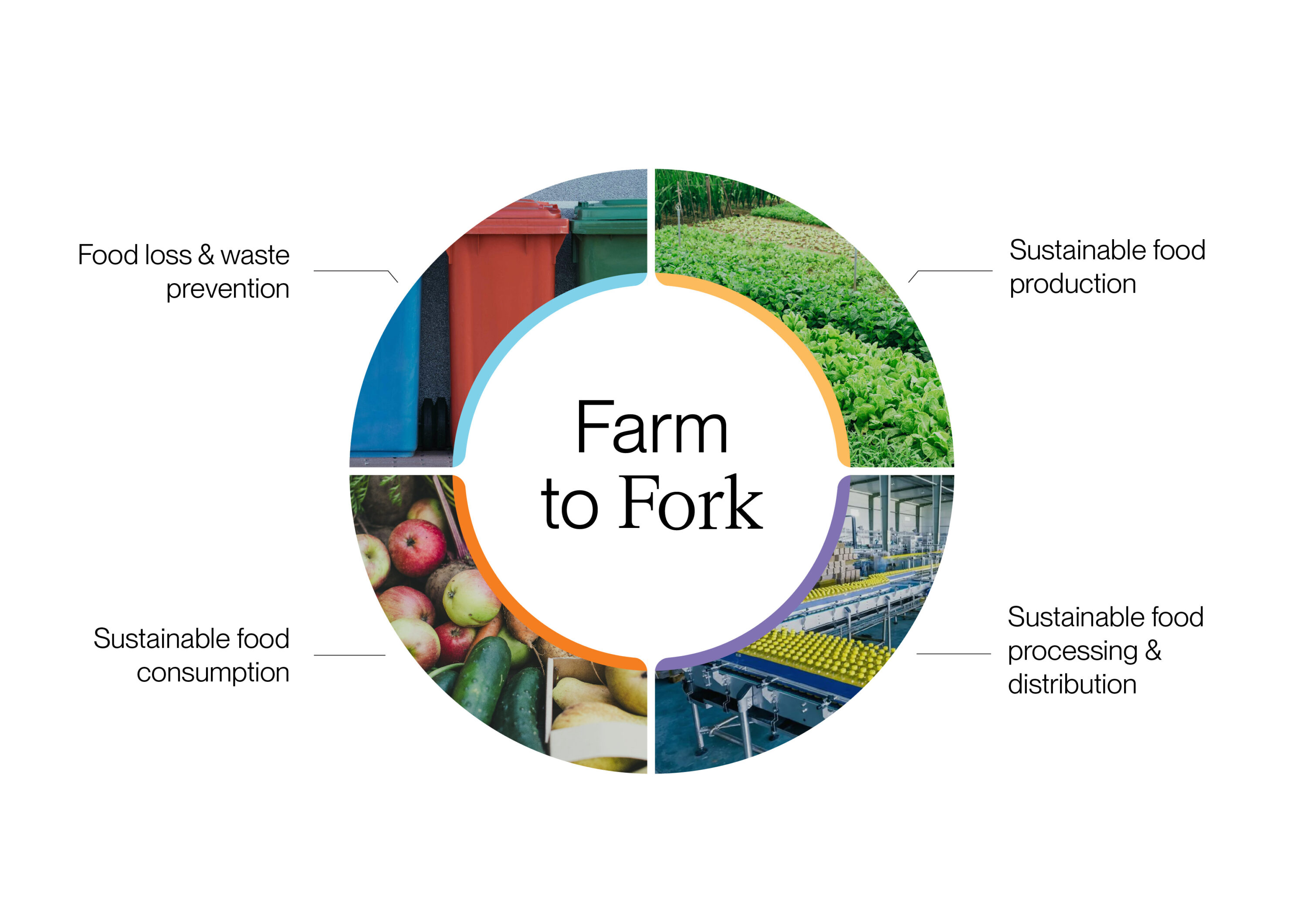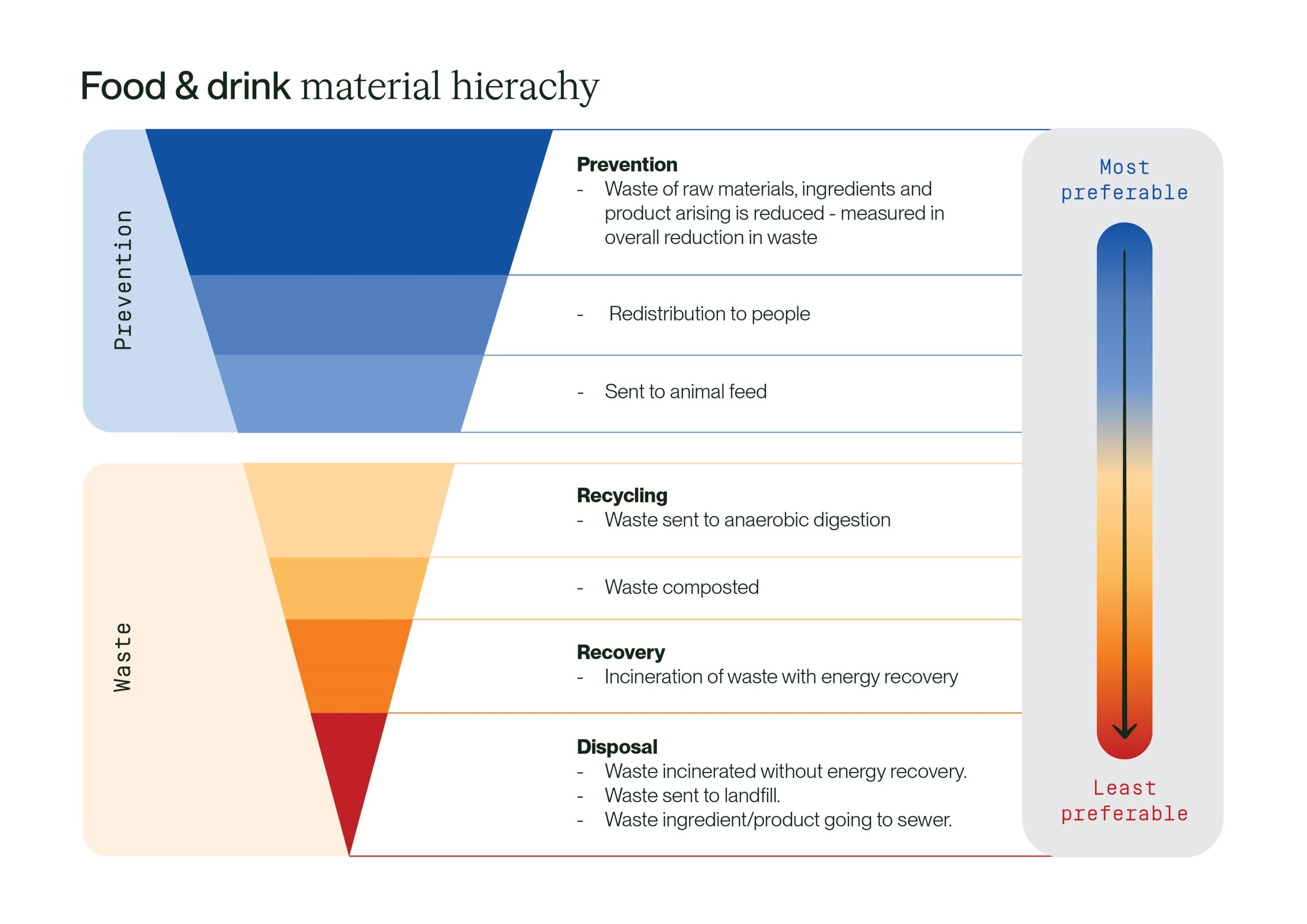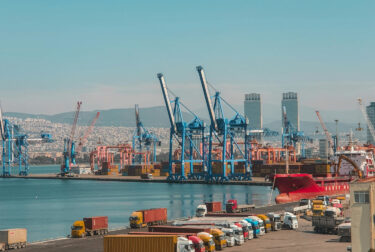
Contents
- 1. Reducing Food Waste is Critical
- 2. Keeping Up with Legislation
- 3. Transitioning to Circular Systems
- 4. Business Benefits
- 5. The Time is Now
- How Anthesis Can Help
- Contact Us
Share this article
In 2015, food waste gained awareness and importance at the global level when the General Assembly of the United Nations included the topic within their 2030 sustainable development agenda. Specifically, Food Loss and Waste was included within Sustainable Development Goal 12 (SDG 12), “sustainable consumption and production”.
Specifically, SDG 12.3 sets out the following:
“By 2030, halve per capita global food waste at the retail and consumer levels and reduce food losses along production and supply chains, including post-harvest losses”
The issue of food waste is multi-faceted, stemming from various factors throughout the food’s life cycle, from production to consumption. Addressing this complex challenge requires a multi-pronged approach, but why should businesses seeking to improve their sustainable performance turn to food waste reduction?
1. Food Loss and Waste is Critically Important
Food is universally essential for survival, and is part of everyday routines, cultures, and values. However, most do not appreciate the scale of food wasted across the globe.
The UN estimates a staggering one third of all food produced globally is either lost or wasted across all stages of the food supply chain, yet there are around 785 million people living in food poverty daily. Tragically, almost 70% of food lost or wasted could have been avoided.
This juxtaposition not only highlights a significant inefficiency in our global food systems, but also underscores a moral dilemma. Additionally, the environmental impact of food waste is significant. It is thought that Food Loss and Waste contributes anywhere between 8-10% of total global GHG emissions and, by consequence, amounts to economic losses totalling $940 billion annually.
For every kg of food wasted, we are immediately triggering demand for new food to be produced and grown, thus exacerbating the negative impacts of our food systems which demand resources from agricultural land and freshwater use, in turn impacting biodiversity and climate change.
With the global population set to increase to 9 billion by 2050, reducing food waste is critical if the world is to have enough food to meet this demand.
2. The Legislative Context is Changing: Mandatory Food Waste Reporting and Reduction
Throughout the EU
Within the EU, the European Commission proposed in July 2023 amendments to the Waste Framework Directive to accelerate progress towards tackling food waste. Food Waste is equally a key part of the Farm to Fork strategy, which lays out a proposed legislative framework for sustainable food system transformation in the EU.

Specifically, the amendments called for all member states to:
- Reduce food loss and waste by 10% in processing and manufacturing
- Reduce per capita food waste by 30% in retail and consumption, including hospitality, food service, and in households.
However, in March of 2024, the European Parliament voted for proposals for stricter binding targets at the national level to be met by the end of 2030, as follows:
- A minimum 20% reduction in food loss and waste at the processing and manufacturing stages (instead of 10%)
- A minimum 40% reduction in retail and consumption (instead of 30%)
As a result, the Waste Framework Directive (for textiles and food waste) will now go through a negotiation phase between the European Commission, the European Parliament, and the EU Council and it is hoped a final agreement will be reached by the end of 2027.
In the UK
In the UK, various commitments exist at the country level. Scotland, for example, has committed to reducing food waste by 33% by 2025. Wales aims to reduce avoidable food waste by 50% in the same time period. England & Northern Ireland are targeting a 50% reduction by 2030.
In addition to these targets, and in an attempt to tackle a key driver of food waste – households, mandatory food waste collections are already in place in Wales and Northern Ireland, and Scotland have implemented food waste collections across 80% of households. England will follow with collections becoming mandatory by March 2026.
While voluntary agreements have encouraged many food businesses in the UK to take the first step of measuring and reporting food waste, the industry is calling for mandatory reporting requirements. In March 2024, over 30 major food businesses, including Tesco, Aldi, Sainsbury’s, and Waitrose, along with the BRC (British Retail Consortium) and food app Too Good to Go, issued an open letter calling for mandatory public food waste reporting. A decision around this is scheduled for mid-2025 at the earliest.
Across North America
Similar commitments and pushes are being made across North America, as well, with both the U.S. and Canada having committed to the SDG 12.3 goal of cutting food waste and loss in half by 2030.
State-level regulations and policies focused on reducing food waste and loss are increasing within the United States. While there are no standalone food waste mandatory reporting laws in the U.S., reporting requirements have been implemented for organic waste bans and food donation. For example, New York businesses are required to report annually on the pounds of food donated and recycled, and California’s SB 1383 requires food waste generators to keep food donation records regarding quantity donated, schedules for donations, and recipient organisations.
3. Accelerating the Transition to a Circular Economy and Circular Food System
The Ellen Macarthur Foundation states, that a circular food system ensures that no food ends up as waste. This generates revenue opportunities, combats climate change, protects biodiversity, and ensures more long-term resilience.
The elimination of waste is one of the cornerstones of a circular food system, and there are many possible solutions to this, including:
- Food Donation: Redirecting surplus food to those in need not only alleviates hunger but also ensures that the resources used to produce the food do not go to waste. Food donation programs must be scaled up and streamlined to bridge the gap between excess and need effectively.
- Food Upcycling: Transforming food scraps or by-products into new, high-quality products is an innovative way to reduce waste. Upcycling adds value to what would otherwise be discarded, promoting a circular economy.
- Identification of Food Loss Hotspots and Interventions: Pinpointing where in the supply chain the most significant losses occur allows for targeted interventions. Implementing best practices, improving storage and transportation, and educating stakeholders can dramatically reduce waste.
- Collaborative Efforts Across the Board: The success of any strategy to combat food waste hinges on the active participation and cooperation of all stakeholders involved in the food supply chain. From farmers, food producers, and retailers, to consumers and even policymakers, each plays a crucial role in the ecosystem. Engaging all parties in dialogue, sharing knowledge, and fostering partnerships can lead to more innovative solutions and a unified approach to reducing food waste. It is only through collective responsibility and synergistic efforts that we can achieve the goal of a sustainable and waste-free future.
In this context, WRAP’s food waste hierarchy (see below) is helpful in showing the order in which actions should be taken to manage loss and waste in the food system. Firstly, prioritise efforts to prevent food loss and waste from being generated; secondly, prioritise donations/redistribution of food to humans; and thirdly, redistribute materials to animal feed.

Beyond this point, anything generated is considered as waste and should be managed in the following order: recycling, recovery, and disposal. It’s not always possible to follow the hierarchy, as decisions around the final destination of waste can be influenced by cost, infrastructure, and facilities available. Nevertheless, the higher up the hierarchy actions can be taken, the more beneficial it is for the organisation and the environment.
4. The Benefits of Tackling Food Loss and Waste
The benefits of tackling food loss and waste for businesses across the food system are numerous and multi-faceted.
Addressing food loss and waste:
- Drives business performance through operational efficiency and cost reductions.
- Reduces emissions footprint laddering up to decarbonisation goals.
- Aligns with corporate sustainability goals relating to environmental and social impact, which in turn can impact positively on brand perception and reputation.
- Aligns with SDG 12 and gets a business ahead of potential mandatory requirements in food loss and waste management.
- Develops circularity, closes the loop in food, retaining it at its highest value.
- Reduces waste across the full value chain through efficiencies.
- Offers employees opportunities to innovate and reduce global environmental impact.
- Broadens stakeholder engagement, supporting local communities with food re-distribution and impacting waste across the value chain.
- Leads to more efficient and resilient supply chains – less waste, less resource demand for food.
- Improves brand reputation and licence to operate.
5. The Time is Now
Having passed the halfway point to 2030, the time to focus on food loss and waste reduction in your business is now to ensure targets are met, ongoing business risks are mitigated, and progress towards food system transformation is accelerated.
What are the first steps companies can take to address food loss and waste?
While different regulatory frameworks are in the process of approval and implementation, and in the face of the urgent global challenge to reduce food loss and waste and the social, environmental, and economic impact this delivers, companies can anticipate and voluntarily commit to the reduction of food loss and waste.
There are many existing voluntary initiatives, such as those developed in the UK by WRAP under the Courtauld Commitment and more globally the WRI and Champions 12.3 coalition.
Beyond the UK, food waste initiatives can also be seen around the world. In Australia, we see the National Food Waste Strategy – DCCEEW , and in the United States, the U.S. Food Waste Pact (refed.org) brought about by partners ReFED and WWF.
These initiatives are aimed at companies across the food sector, from growers, producers, distributors, retailers, and food services, to unite in efforts to achieve SDG 12.3. These initiatives provide great support, tools, sector-wide engagement and much needed collaboration around Food Loss and Waste.
In most cases, businesses can start by conducting a food loss and waste assessment to understand the company’s maturity level in food loss and waste. From here efforts should be made to quantify food loss and waste, establish causes and the potential for reduction. Reducing food waste and increasing circularity is complex and impacts many different areas and as such should be tackled in a co-ordinated manner.
How can Anthesis help?
Anthesis has extensive knowledge and experience in helping clients across the industry to understand, measure, report, and reduce food waste in the value chain.
We work with food retailers, manufacturers, growers, investment communities and industry bodies to facilitate and accelerate food waste reduction in line with decarbonisation and social impact goals.
Our team offers deep subject knowledge and experience applied to your business context and works within globally recognised FLW frameworks and protocols to positively impact broader food system transformation.
From operational and value chain waste analysis to market assessments, our services cover circular economy support, waste footprinting and extensive support in reduction and prevention of FLW. We provide expertise in waste data, metrics and reporting, waste reduction strategy development and roadmaps, resource recovery, stakeholder and supply chain engagement, and behaviour change.
We are the world’s leading purpose driven, digitally enabled, science-based activator. And always welcome inquiries and partnerships to drive positive change together.





